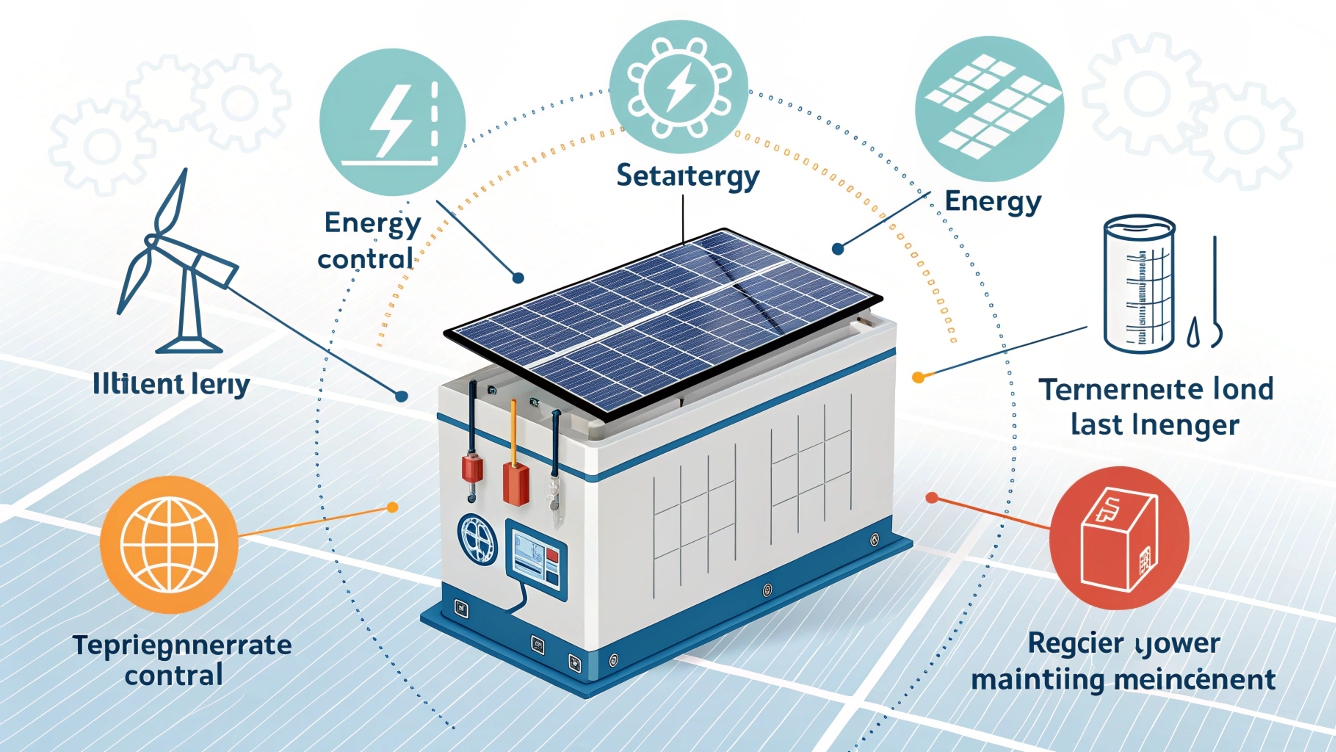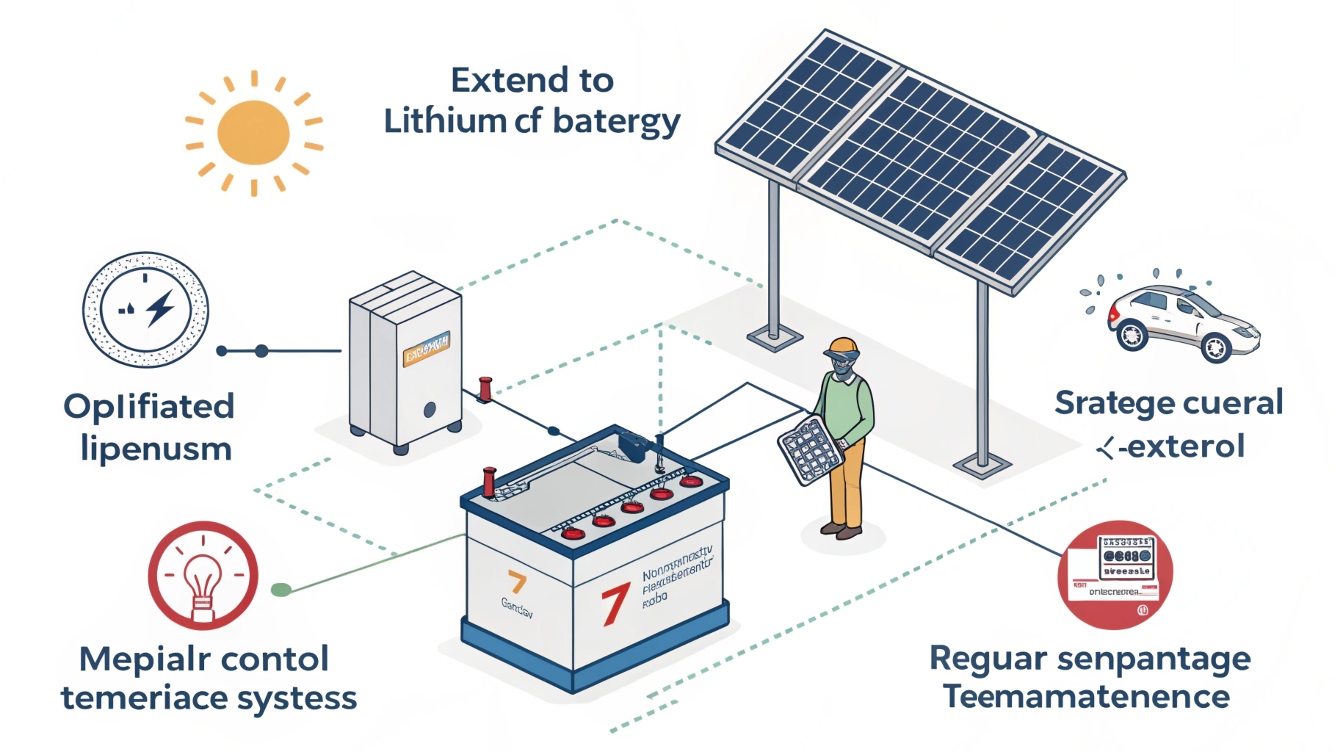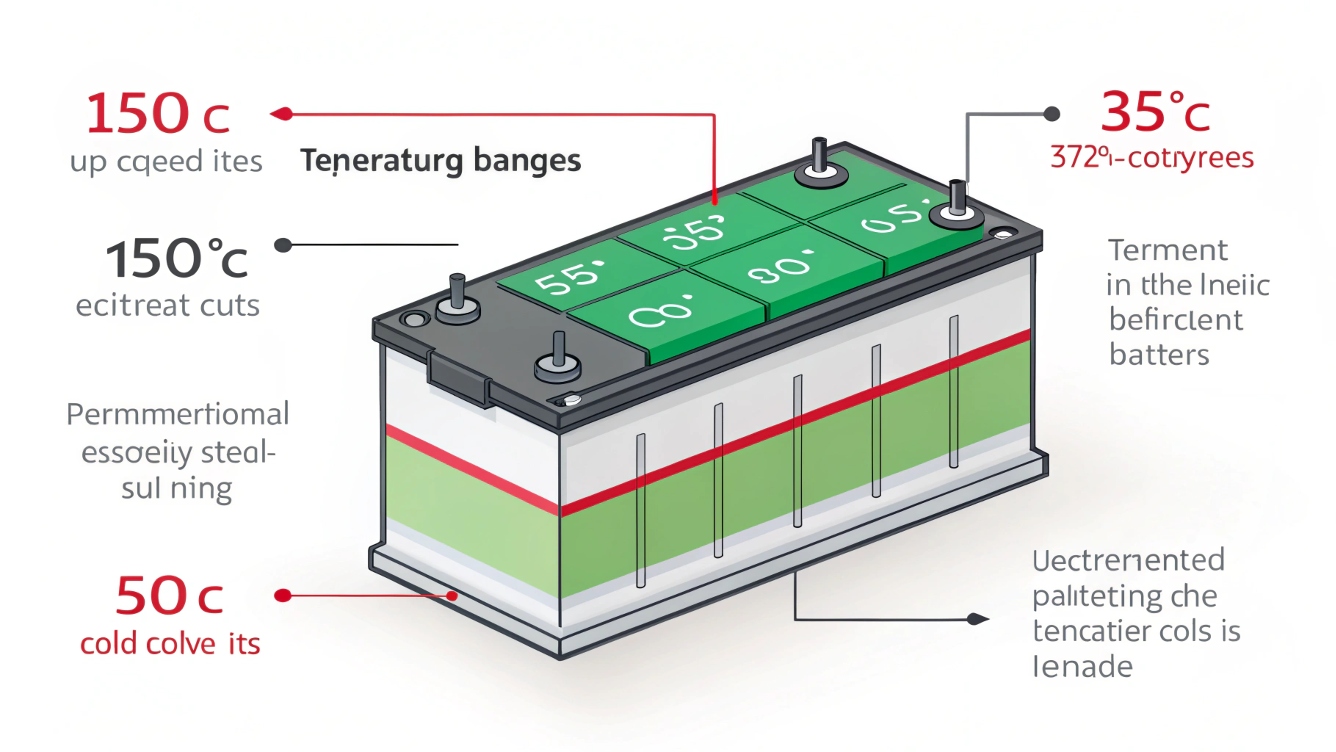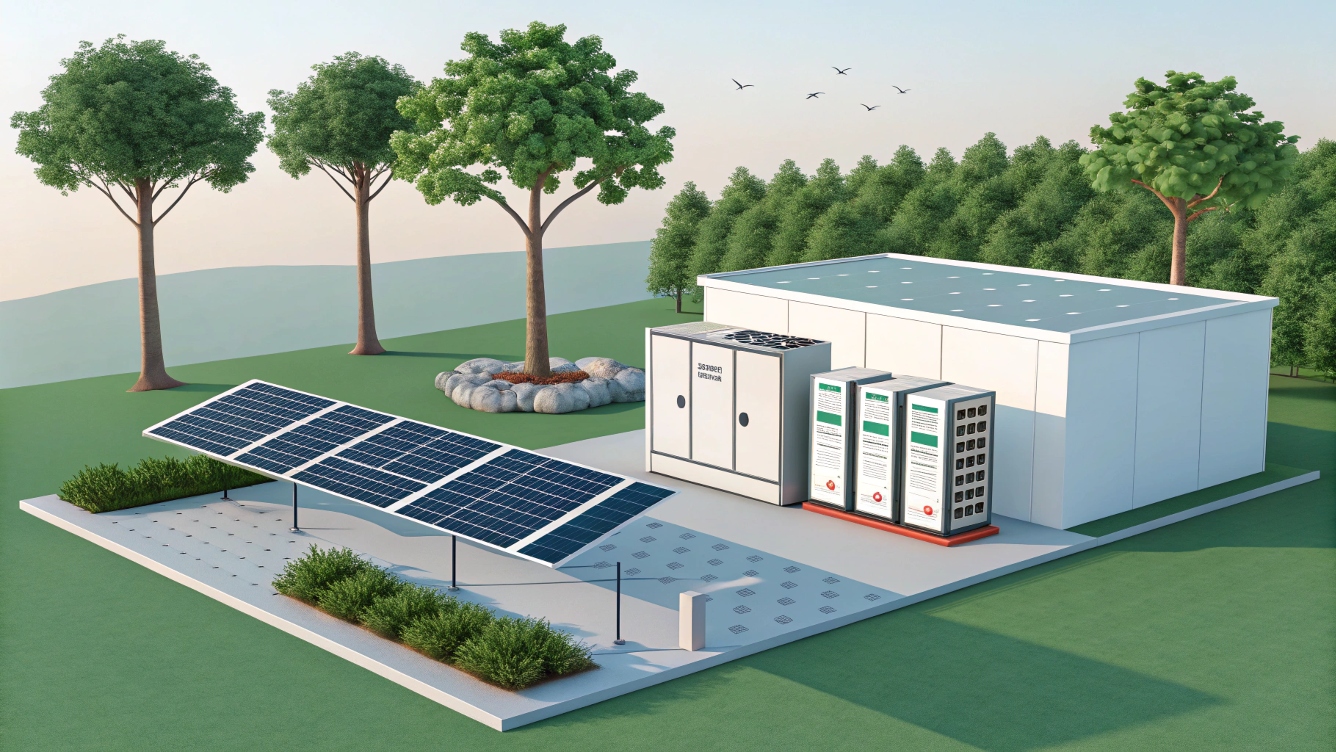Jak zrobić Bateria litowo -jonowa dla słonecznych Trwają dłużej: 7 Sprawdzone strategie
Dlaczego jesteś Bateria litowa gotowa do słonecznego Zasługuje na specjalną opiekę
Jak zrobić dłużej baterię litowo-jonową?
Akumulatory litowo-jonowe są kręgosłupem nowoczesnych systemów energii słonecznej, Oferowanie wysokiej gęstości energii i długiej żywotności cyklu. Jednakże, Ich długość życia zależy od tego, jak dobrze je utrzymujesz. Typowy LifePo4 (fosforan litowo-żelazowy) Bateria trwa 6,000+ cykle przy 80% głębokość wyładowania (DoD)- Ale złe praktyki mogą to znieść 50%:cytować[4]:cytować[6]. Oto jak zmaksymalizować długowieczność dla swojego Słoneczny system przechowywania litowego.
1. Zoptymalizuj nawyki ładowania: The 20-80% Reguła
Unikaj pełnych opłat i głębokich zrzutów
Akumulatory litowo-jonowe degradują najszybciej przy ekstremalnych poziomach ładowania. Trzymanie ich między 20% I 80% stan naładowania (SoC) zmniejsza naprężenie na elektrodach i elektrolitach. Na przykład:
- Ładowanie 100% Codziennie zmniejsza życie cyklu przez 20-30% w porównaniu do 80%:cytować[6]:cytować[8].
- Rozładowanie poniżej 20% przyspiesza splatanie litowe, trwale zmniejszając pojemność:cytować[10].
Dla wskazówki: Użyj a Inteligentny system zarządzania baterią (BMS) Podobnie jak nasze BMS Gycx Solar do automatyzacji limitów ładunku i zapobiegania nadmiernemu rozładowaniu.
2. Kontrola temperatury: Cichy zabójca
Idealny zakres roboczy
Akumulatory litowe kwitną w temperaturze 15 ° C - 25 ° C (59° F - 77 ° F.). Ekstremalne temperatury sieją spustoszenie:
- Ciepło (>35°C): Przyspiesza rozkład elektrolitu, przecinanie życia przez 50%:cytować[4]:cytować[9].
- Zimno (<0°C): Spowalnia ruch jonowy, powodując tymczasową utratę pojemności i trwałe uszkodzenie, jeśli zostanie obciążony:cytować[8].
Rozwiązania:
- Zainstaluj baterie w zacienionym, wentylowane obszary.
- Używać obudowy regulowane temperaturą w przypadku konfiguracji poza siecią w trudnych klimatach.
3. Paraj z Kontrolery ładunku słonecznego MPPT
Dlaczego to ma znaczenie
MPPT (Śledzenie maksymalnego punktu mocy) Kontrolery optymalizują wyjście panelu słonecznego, jednocześnie chroniąc akumulatory:
- Dostosuj napięcie/prąd, aby dopasować potrzeby baterii.
- Zapobiegaj przeładowaniu, Nawet podczas szczytowego światła słonecznego.
Studium przypadku: Układ słoneczny o pojemności 5 kW przy użyciu naszej piły SolarCharge MPPT 100A 18% dłuższa żywotność baterii w porównaniu do kontrolerów PWM:cytować[9].
4. Objąć częściowe zrzuty i powolne ładowanie
Głębokość rozładowania (DoD) Wytyczne
- 50% DoD: Podwaja życie cyklu vs. 100% DoD. Na przykład, Bateria 10 kWh zwolniona do 5 kWh dziennie trwa 2x dłużej:cytować[6]:cytować[8].
- Stawki ładowania: Powolne ładowanie (0.5C lub niższe) Zmniejsza naprężenie elektrody. Szybkie ładowanie (1C+) zwiększa ciepło i degraduje komórki 30% szybciej:cytować[8].
Dla wskazówki: Projektuj systemy słoneczne o nadmiernej pojemności. Bateria 200AH z obciążeniem 100AH naturalnie działa 50% DoD.
5. Uaktualnij do Modułowe systemy akumulatorów
Skalowalność spełnia długowieczność
Układalne akumulatory litowe pozwól ci się:
- Dodaj pojemność w miarę wzrostu energii, Zmniejszenie obciążenia poszczególnych jednostek.
- Wymień moduły starzenia się bez remontu całego systemu.
Przykład: Zacznij od 5 kWh Modułowy zestaw akumulatorowy gycx i rozwijaj się do 20 kWh z czasem.
6. Regularna konserwacja i monitorowanie
Kluczowe zadania
- Czyste terminale: Korozja zwiększa opór, marnowanie energii. Używaj sprayów antykorozyjnych 6 miesiące:cytować[9].
- Zaktualizuj oprogramowanie układowe: Nowoczesne oprogramowanie BMS poprawia równoważenie i diagnostykę.
- Sprawdź napięcie: Comiesięczne kontrole napięcia wychwytują słabe komórki wcześnie.
Zalecenie narzędzia: Nasz monitor baterii Bluetooth zapewnia SoC w czasie rzeczywistym, temperatura, i alerty zdrowotne.
7. Najlepsze praktyki przechowywania do użytku sezonowego
Zachowaj baterie na biegu jałowym
- Poziom ładowania: Przechowuj w 50% SOC, aby zminimalizować starzenie się:cytować[4]:cytować[9].
- Środowisko: Zachować sucho, 15° C obszar - garaże lub zrzucają z wahaniami temperatury.
Hack awaryjny: Do długoterminowego przechowywania, Użyj a Tricle Solar Ładowarka do utrzymania 50% ładować bez przeciążenia:cytować[2].
Przypomnienie na przyszłość z Innowacje w zakresie baterii słonecznych litowych
| Technologia | Korzyść | Wpływ na żywotność |
|---|---|---|
| Baterie w stanie stałym | Brak łatwopalnych elektrolitów | +50% cykle (Rzutowane) |
| Optymalizowane przez ADŁOWEJ ładowanie | Dynamiczne regulacje DOD/SOC | +30% długość życia |
| Pakiety samongalujące | Działa do -30 ° C | Zapobiega uszkodzeniu zimnym |
Dane pochodzące z branży r&D i Wikipedia: Postępy baterii litowo-jonowej.
Często zadawane pytania: Odpowiadając na krytyczne pytania
Q: Czy mogę wymieszać stare i nowe baterie w Bank baterii słonecznych?
A: Tak, ale ogranicz starsze jednostki do 70% DOD, aby zapobiec nierównowagi. Użyj BMS z równoważeniem komórek:cytować[8].
Q: Jak często powinienem w pełni naładować baterię słoneczną?
A: Tylko przed oczekiwanym ciężkim użyciem (NP., burze). Miesięczny 100% Opłaty pomagają w kalibracji mierników SOC:cytować[6].
Q: Czy panele słoneczne rozciągają żywotność baterii?
A: Tak! Solar zmniejsza cykle ładowania siatki. Pary panele z Kontrolery MPPT Aby uzyskać optymalne wyniki:cytować[9].
Wniosek: Zbuduj mądrzejszy Słoneczny ekosystem litowy

Rozszerzanie bateria litowo -jonowa dla słonecznych LifeSpan to nie nauka rakietowa - chodzi o unikanie skrajności i wykorzystanie inteligentnej technologii. Od częściowego ładowania po modułowe projekty, liczy się każdy krok. w GYCX Solar, Inżyniejemy systemów, które rosną z twoimi potrzebami, jednocześnie maksymalizując długowieczność.
Następne kroki:
- Odkryj nasze Zestawy baterii słonecznej z wbudowaną optymalizacją życia.
- Pobierz nasze Przewodnik po baterii W przypadku sezonowych wskazówek dotyczących konserwacji.
- Obejrzyj demo z integracją BMS napędzanych przez AI do konfiguracji.
Odniesienia
- Mechanizmy starzenia litowo-jonowego: Wikipedia: Bateria litowo-jonowa.
- DOD DANY Cykl: Cadex Laboratory Studies:cytować[6].
- Wytyczne temperaturowe: Podręczniki baterii przemysłowych Saft:cytować[8].



